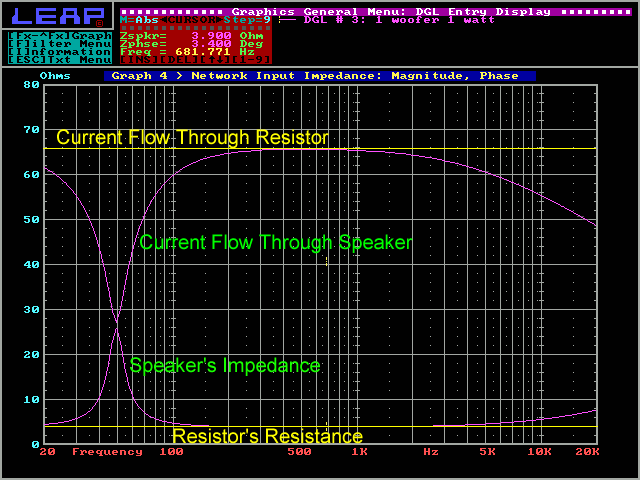
|
| Email Home Page |
|
|

|
| Email Home Page |
|
|
|
Up to this point, only speaker resistance has been mentioned. Speaker impedance will be introduced on this page. It was stated that resistance is the opposition to the flow of current. While this is true, it would be more precise to say that resistance is the opposition to the flow of direct current. Impedance is the opposition to the flow of alternating current. AC voltage/current causes some devices to behave differently than they do with DC. This is true with speakers. If you use a voltmeter to measure the resistance of a speaker's voice coil, you may read something like 3.2 ohms (DC resistance) even if the speaker has a rated impedance of 4 ohms. The impedance of a speaker is not a constant. It's actual impedance changes with frequency and can vary greatly. Manufacturers give you a nominal impedance, which is generally the average impedance that the speaker will present to the amplifier when driven within the part of the audio spectrum that its designed to reproduce. The diagram below may give you some idea of the difference between the current flow through a resistor and the changing current flow through a speaker. Keep in mind that the resistor's resistance will not change (significantly) as the frequency changes (as indicated by the lower yellow line). The current through the resistor will also remain constant (as shown by the upper yellow line). You will notice that as frequency changes, the impedance of the speaker changes. As the speaker's impedance increases the current flow decreases. The voltage applied to the resistor and speaker remains constant across the audio spectrum. I will explain speaker impedance in more detail on upcoming pages.

The crossover slope II page has more impedance plots if you're interested. |
|
You should remember: 1.Resistance refers to the opposition of D.C. current flow. 2.Impedance refers to the opposition of A.C. current flow. |

|

|
|

|